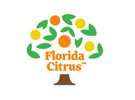A new research report shows that Americans continue to consume less and less fruits and vegetables despite consistent dietary advice to the contrary. An accompanying decline in the consumption of 100% fruit juice, such as orange juice, is likely a significant contributor to the issue.

The Produce for Better Health Foundation (PBH) reported in its “State of the Plate: America’s Fruit and Vegetable Consumption Trends” that Americans continue on a 15-year decline in the consumption of fruits and vegetables. The report shows that fruit and vegetable consumption has declined nearly 10 percent and that Americans are eating produce just once each day. The news is troubling given the breadth of research that supports the diet and health benefits of consuming a variety of fruit and vegetables in recommended amounts. Additionally, juice consumption declined 8 percent over the past 5 years.
Leading the charge in this downward trend is a decrease in the frequency of vegetable and 100% fruit juice eating occasions – down 16 percent and 15 percent, respectively, since 2004. Nearly one quarter of Americans did not eat any fruit over the course of the week. Although the amount of fruit (not including juice) consumed at each occasion rose, it was not enough to stem overall declines.
For juice, eating occasion losses are occurring in all age groups. The newest 2020-2025 Dietary Guidelines for Americans cites 100% fruit juices as a recommended beverage for almost all age groups because of its nutrient density and lack of added sugars. Overall, declines in fruit and vegetable consumption were highest for older millennials.
100% fruit juice counts as a fruit serving and an 8-ounce serving of 100% orange juice is an excellent source of vitamin C and a good source of potassium, folate, and thiamin. Orange juice also provides beneficial plant-based compounds, specifically the polyphenol hesperidin, that may have antioxidant, anti-inflammatory, and other health benefits.
“Our own research on OJ, using a nationally representative sample of Americans, is similar to PBH’s data in that we showed significant decreases in 100% juice intake and some increases in whole fruit intake in certain age groups over time,” said Gail Rampersaud, a registered dietitian nutritionist with the Florida Department of Citrus. “Additionally, our data show an overall decrease in vitamin C intake over that time period so obviously the loss of vitamin C from juice, particularly OJ, is not being replaced by whole fruit or other foods. Fifty-six percent of consumers in the PBH study say they want more vitamin C so this points to the importance of 100% OJ in the diet for getting key nutrients and meeting recommendations.”
For more information:
information:
Florida Department of Citrus
Web: floridacitrus.org
